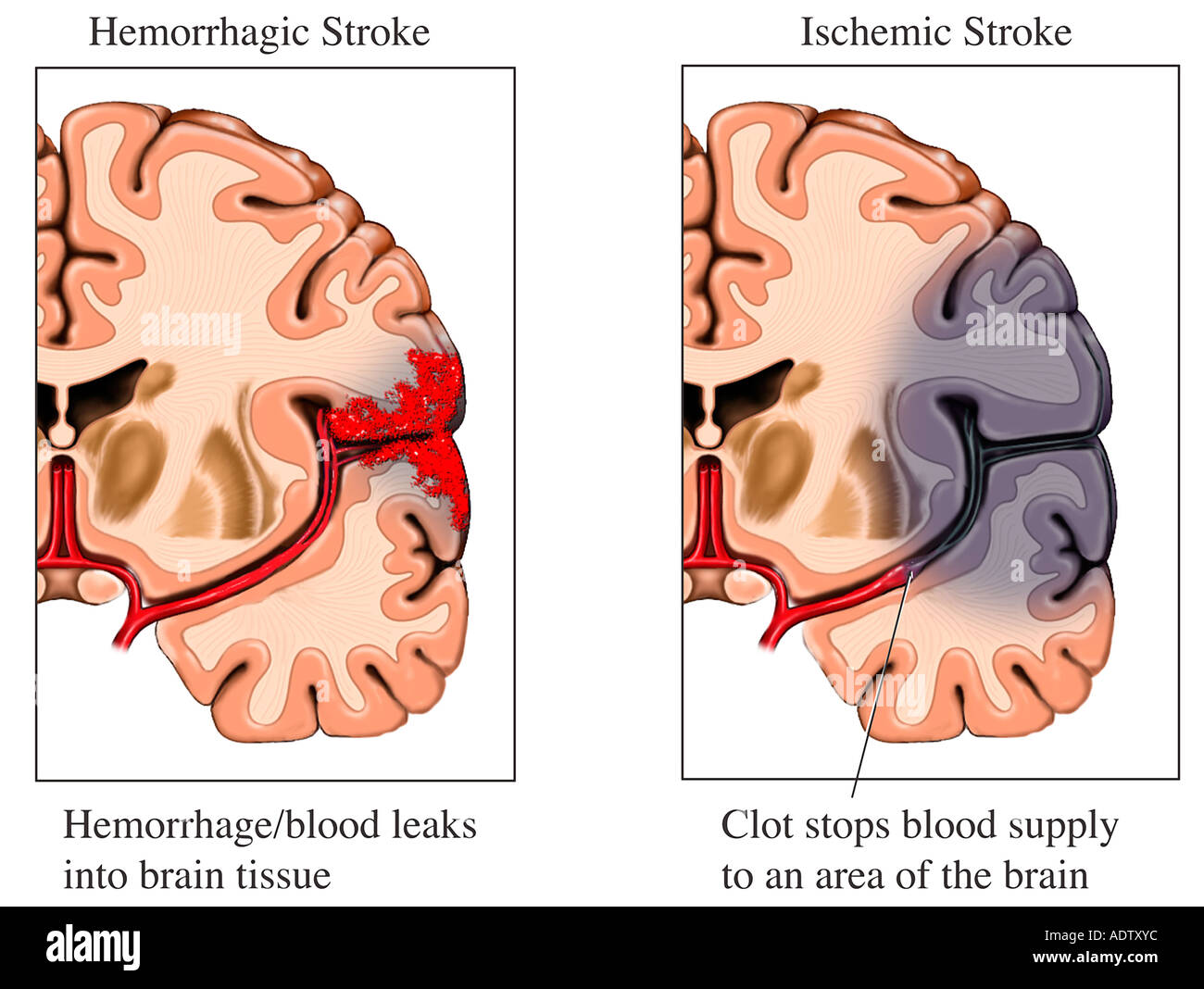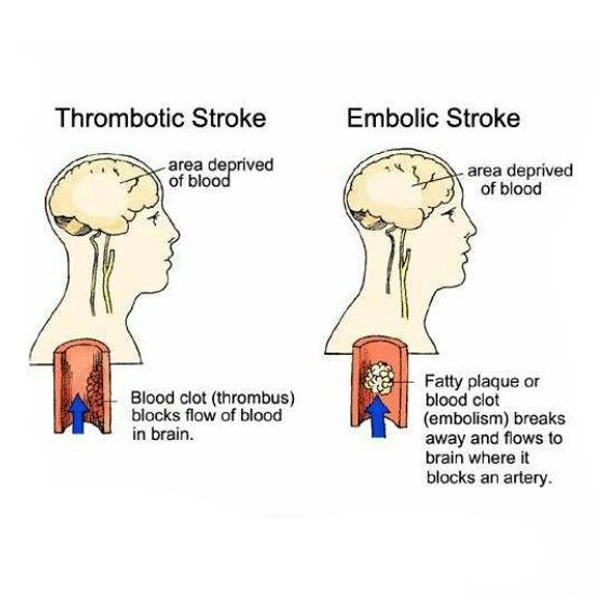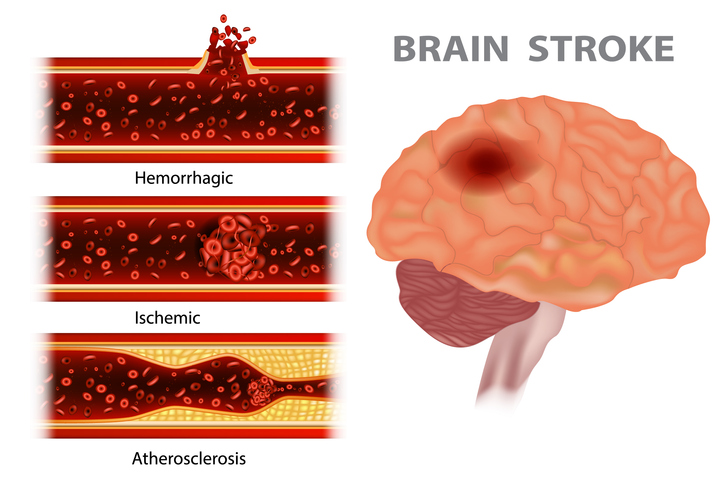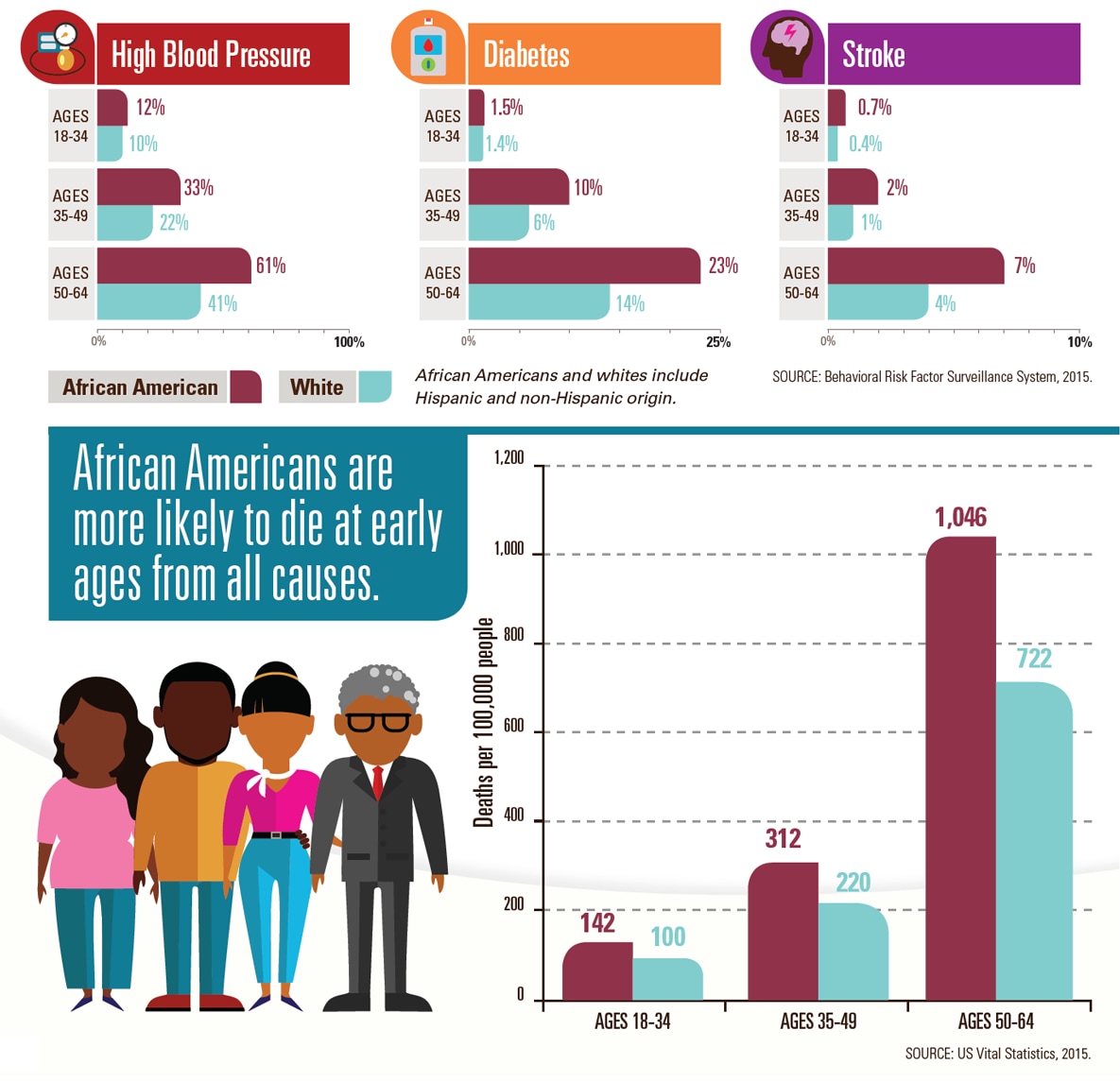List 5 risk factors for stroke.
Hypertension
Diabetes
Heart Disease
Smoking
Oral Contraceptives
High Blood Cholesterol and Lipids
Transient Ischemic Attacks (TIAs)
Obesity
And Many More!!
What is the difference between hemorrhagic stroke and ischemic stroke?



What is the Cushing's Triad?
The presence of hypertension, bradycardia and irregular respirations in a patient with increased intracranial pressure.

If you have diabetes, your chances of having a stroke are ____ times higher than in people who don't have diabetes.
1.5 to 2!

A patient with signs and symptoms of stroke is brought to the ED in a universe where there are no medical equipment that can help you find whether he is having a hemorrhagic or ischemic stroke. After speaking with his wife, you find that he previously had a _______. You are now a little more sure that he is having an ischemic stroke.
Transient Ischemic Attack (TIA)
Blood flow to the brain is blocked for only a short time—usually no more than 5 minutes.
More than a third of people who have a TIA and don’t get treatment have a major stroke within 1 year. As many as 10% to 15% of people will have a major stroke within 3 months of a TIA.
Patients with a total score of ___ or less on the NIH Stroke Scale generally have favorable clinical outcomes and have a high likelihood of functional independence regardless of treatment
4 or less!
FLEAS Recognize strokes!
F = FACE
L = LOC (Level of consciousness, on time, commands)
E = EYES
A = ARMS/LEGS
S = SPEACH/ SENSATION
RECOGNIZE = Recognition (Extinction)

Why does hypertension increase the risk of stroke?
1) Atherosclerosis
2) Weakened Blood Vessels
Roughly 320,000 strokes could be prevented per year by controlling hypertension.

CT Imaging
In an ischemic stroke, the brain gets _____ (hypodense/hyperdense) where the stroke occurred. In a hemorrhagic stroke, the blood that spills into the brain appears ____ (hypodense/hyperdense) than the rest of the brain.
In an ischemic stroke, the brain gets darker (hypodense) where the stroke occurred. In a hemorrhagic stroke, the blood that spills into the brain appears brighter than the rest of the brain (hyperdense).

Oral contraceptives increase stroke risk by raising _______ and by making blood ________.
Oral contraceptives increase stroke risk by raising blood pressure and by making blood hypercoagulable.
African Americans are ____ times more likely than their white counterparts to have a stroke.
African Americans are two to three times more likely than their white counterparts to have a stroke.
